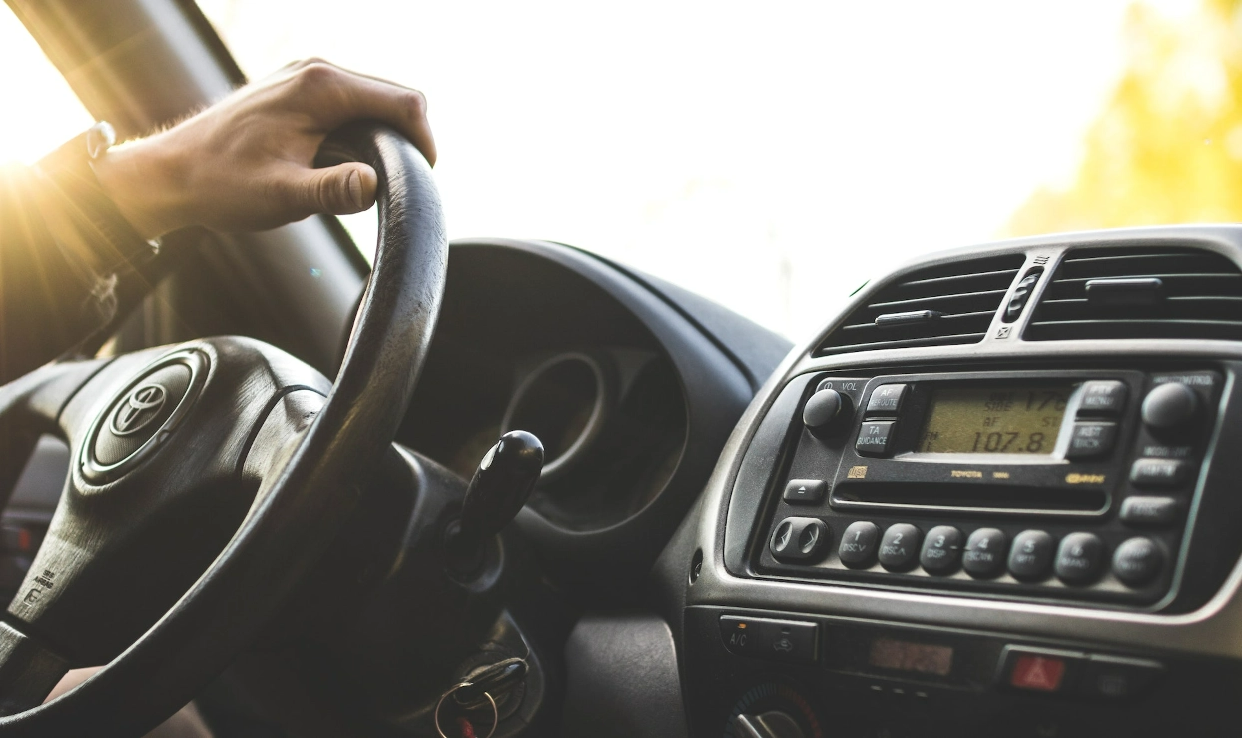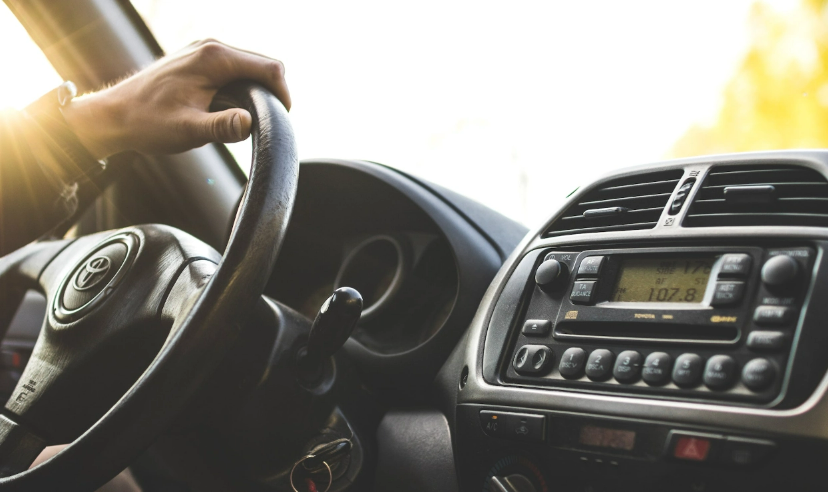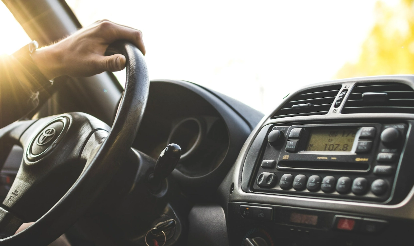With enough savings for a down payment and a sufficient source of income for car amortization, it’s easy to own the four-wheel vehicle of your dream. And with guts and gusto, plus a reliable driving instructor by your side, it’s just as easy to learn how to drive. Now, as to being a responsible car owner, checking your car before driving on the road is an entirely different matter.
In fact, road accidents are still a major cause of concern for motorists. You must maintain the safety of not only yourself and your passengers, but also other drivers and pedestrians you share the road with every time you take your car out for a drive.
Before you get behind the wheel, go through a car safety checklist that covers all the nitty-gritty. Here’s an infographic guide that details car components to inspect before driving.

A systematic approach to checking car safety is essential. Here’s a comprehensive list of car components you need to inspect.
Under the Hood
1. Engine oil
See if the oil level is within the ideal operating range. If necessary, top-up. Look into oil viscosity, too. Rely on your car manual to know the required viscosity for when you will be driving in extreme heat or cold. Also, remember to check the color and make sure to change it before it turns dark.
2. Other fluids
Check the levels of the power steering and automatic transmission fluids. Use a dipstick handle. Ideally, these fluids look pink without foreign particles. A burnt smell means you need the fluid drained and replaced.
3. Cooling system
A coolant should be within the operating range, reaching the full line on the side of the reservoir. If not, replenish with a 50/50 mix of distilled water and pure coolant. However, keep in mind that some coolants are premixed, which means there’s no need to add water. Don’t forget to check the hoses and radiator for leaks. Make sure the radiator cap is properly closed and the radiator fan is working perfectly. Remember, do not open the radiator if the cap is hot.
4. Battery
When you hear slow cranking when starting the car engine, chances are the battery is almost drained. Car batteries last two to five years on average. Once you hit that mark, have a technician gauge whether you need a replacement. In addition, look into how secure the battery is mounted and signs of corrosion on each terminal.
5. Braking system’s hydraulic fluid reservoir
To check the brake fluid, look for the reservoir in the driver’s side of the car where it’s typically found. Make sure the fluid doesn’t go past the maximum level. The color should also be clear. Replace if the color has turned dark. The recommended schedule is every two years of 40,000 kilometers, whichever comes first.
6. Air filter
The engine needs a sufficient supply of clean air to function at its best. So, make sure your air filters are clean. Check the cabin filter, too, to keep the air inside the car fresh while you drive.
7. Engine belts and hoses
Check belts and hoses while the engine’s off and cool. See if everything’s securely attached to where they should connect via a tug test. Look for cracks, abrasions, leaks, and other abnormalities.
8. Engine noises
Tics, rattles, pings, squeaks, and other unusual sounds are red flags that often mean something is wrong with the vehicle. The same goes for increasingly loud exhaust sounds. Unusual noises coming from the engine spell trouble, and you should get the car checked as soon as you can.
9. Leaks
Look at the ground where you park your car if there are signs of leakage. Also, don’t forget to check under the hood near fluid reservoirs to not miss any possible source of leaks.
Around the Vehicle
10. Tires
Follow the recommended tire pressure from your car’s manufacturer. They are typically printed on the driver-side door jamb. If the print’s no longer visible, read the car manual.
11. Wipers
See if the wiper blades do their job properly, meaning there are no streaks and gaps in their path. They should respond accordingly to wiper controls, too.
12. Lights (headlights, rear lights, brake lights, corner lights, signal lights)
It’s best to get help from someone to check if all car lights work as they should when turned on. You do not want to drive with a busted light in the middle of a dark road or one of your signal lights not flashing at all. You need brake lights to signal those behind you, too.
13. Wheel alignment
Look for uneven tread wear. That usually means poor wheel alignment. Other potential culprits include over or under-inflation and a wheel bearing that may need replacement.
14. Spare tire
Your spare tire won’t be of use if it’s not properly inflated. So, regularly check if it’s in the right condition and ready for commission. Use a tire gauge to ensure inflation that’s up to recommended pressure.
15. Windshield
Check for cracks, scratches, and other abnormalities that may impede vision. When you drive, your windshield is under pressure. If there’s a crack there that you failed to notice, if worse comes to worst, the glass might shatter while you’re in transit.
16. Auto emergency equipment
Having the basics such as flashlights, screwdrivers, and a car jump starter, among others, should suffice in case of emergency repairs.
17. Body damage
Check for dents and scratches. Although these are common concerns for aesthetics, these might be an indication of bigger problems. Perhaps a bumper is about to fall off or there’s already a hole in the roof, which are both dangerous.
In the Driver’s Seat
18. Brakes
When you step on the brake pedal, be sensitive to the sound it makes. Metal-on-metal grinding noises mean worn-out brake pads. Also, be wary if the pedal shudders when pushed. If the pedal is feeling spongy, there must be a leak or air in the brake system. This is an indication that the brakes need to be serviced.
19. Mirrors
Your side and rear view mirror should be clear and free of damage. They should be positioned in such a way that provides you with a clear view of the road, especially behind.
20. Seatbelts
Tug test the seatbelts. When strapped on and fastened, they should be completely secure. Remember that 15,000 lives are saved each year, thanks to seatbelts.
21. Dashboard warning lights
Sit behind the wheel and start the engine. Upon ignition, all warning lights should flash on momentarily. If one does not blink, have the car checked. It’s likely an electrical system issue. You might get in trouble with a faulty warning light, so do not risk it.
22. Transmission
Take your vehicle to a Toyota car maintenance outlet in case of transmission problems, such as when you notice unusual sounds when shifting gears. Remember that even if you’re driving an automatic vehicle, your car still has a transmission gear that requires regular checkups.
23. Clutch
The clutch should feel neither spongy nor hard. When you step on it, it should give way to your foot just the right way while shifting. Plus, there ought to be no unusual sounds when you activate the car’s clutch system.
24. Air conditioning system
Make sure the fan, compressor, and other parts are working just fine. This gives comfort while driving under extreme heat conditions. You also wouldn’t want to keep adjusting the thermostat while driving.
25. Turn signals
Turn signals are your way of communicating with other motorists, making the roads safer for everyone. Make sure they work as they should. If one side isn’t blinking properly, take them to a technician straight away.
Safety Above All Else
For whatever reason, checking your car before driving is a necessity. Regardless if we are in a hurry or preoccupied with other thoughts and matters, this shouldn’t compromise everyone’s safety. This should always be a top priority every time you’re going out for a drive.
Be the most responsible car owner and driver you can be. So when you see, hear, or feel any abnormalities when you check your car, do not hesitate to visit a Toyota dealership near you. And always remember to give your vehicle a full car maintenance service to prevent further problems especially when you’re on the road. For inquiries about our models, don’t hesitate to contact us today.


















